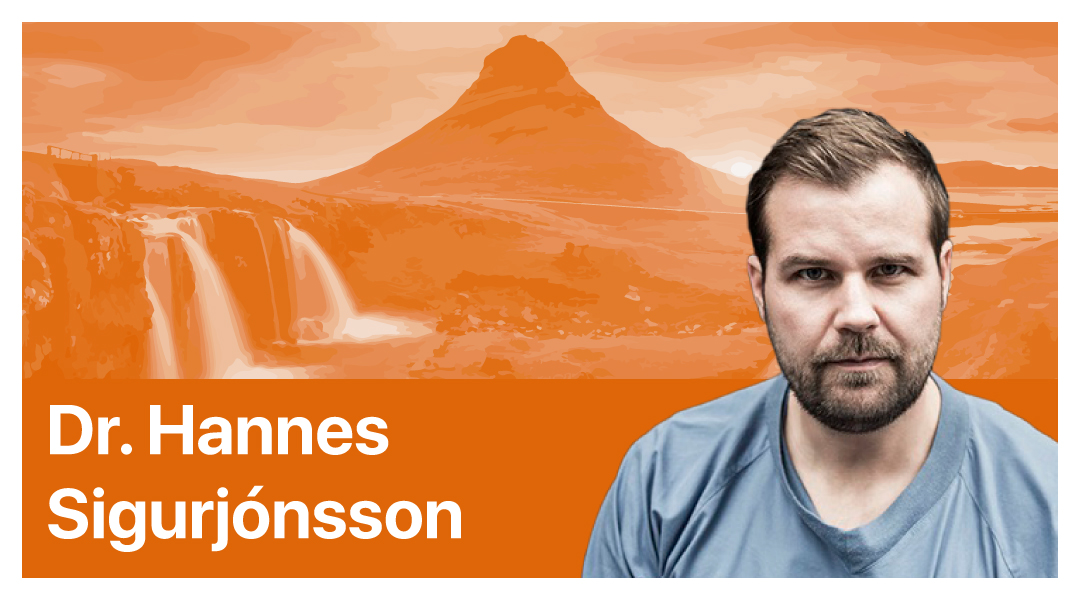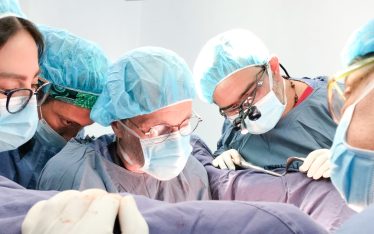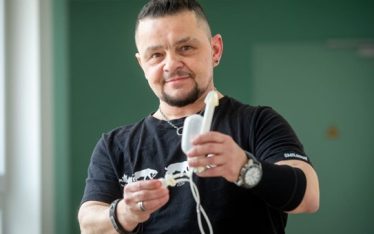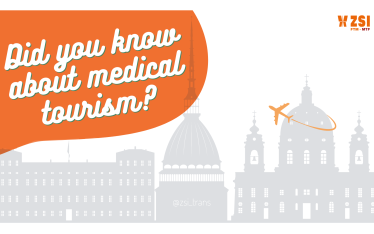During the lockdown, we had to postpone our plans to meet surgeons of different countries. Therefore, we had initiated live interviews on our Facebook page, so that everyone could interact at the same time and ask their questions.
We were pleased to interview Dr. Hannes Sigurjonsson, plastic surgeon at Dea Medica in Iceland and also at Karolinska Hospital in Sweden.
He told us about his experience, surgery procedures and answered your questions.
Watch the replay of his interview here!
Could you tell us about you?
I am a plastic surgeon and I work at the private clinic Dea Medica, in the center of Reykjavik, in Iceland. I started in plastic surgery 10 years ago in Stockholm, in Sweden. I am also working at the University Hospital of Reykjavik, and I am at least one week a month in Stockholm, at the Karolinska University Hospital, the biggest university hospital in Sweden.
I have been doing transgender surgeries for almost 10 years now. We saw a huge increase in patient numbers when I was starting my residency in Stockholm. I had a huge interest for these surgeries and that has been my main focus the last years.
What kind of surgeries do you perform?
I do both FTM and MTF. I do bigger surgeries like phalloplasties and vaginoplasties at the university hospitals on both Icelandic and Swedish patients. In my private clinic, I do smaller surgeries like mastectomies and secondary surgery after vaginoplasties, and also implantations of devices for the phalloplasty.
Which techniques do you use for the phalloplasty and the vaginoplasty?
I do mostly penile inversion vaginoplasty with an addition of scrotal skin if it is needed. For phalloplasty I have done mostly ALT and radial forearm flap, which are the most common flaps used.
How do you choose which technique?
What the patient wants is the main point. I discuss with patients what they really want for their phalloplasty. Then we chose together the appropriate operating technique.
Do you perform urethra lengthening?
Yes, we do urethra lengthening. Most of the cases when the patient desire UL and the ability to pee standing.
I also use the skin flap for UL. But actually, the reality in Sweden has been in the last years that the patients are not getting UL. Because of the fact of a very high percentage of complications with UL. Here again we discuss the desire and expectations the patient has for the phalloplasty.
You can have a very good and functioning phalloplasty with a scrotoplasty, testicular implants and also erectile implant, but you still have to pee seating. It is a measurement that the patient has to decide for himself. Am I willing to take the risk of being in and out the hospital for the next years doing corrective surgery for my urethra and the risk of getting infection etc? A lot of Swedish patient have decided not to get UL for these reasons.
Do you also correct urethral problems for patients coming from abroad?
Yes absolutely. We just have to plan very carefully. We do correction surgery on urethral fistula or stenoses.
Do you also perform metoidioplasty?
I have done some metoidioplasties, but that has not been the main focus. We have 2 very active centers in Sweden, we decided that we would focus on phalloplasty and the other center would focus on metoidioplasty. However, when you are doing a phalloplasty with UL, you can’t do a meta while you are doing it.
Do you make as well MLD phalloplasty?
I have done a really few cases, but we like the ALT and the radial forearm flap better. So, I have not done a lot of those.
Could you tell us about your experience with our implants?
Actually, we were among the first ones in the world to use them in 2016. We started with the malleable one and that is also the implant I have the most experience with. The biggest advantage of this implant is the fixation plate. Because the other erectile implants are designed for cisgender men, there is much more instability with the implant.
The other advantage is the width of the implant, because some phalloplasties require a wider implant. And you can always reduce the width when necessary, and there is also a narrow implant. It is really important to choose the right size.
Have you also implanted our inflatable implant ZSI 475 FTM?
I have done a few cases of the inflatable. The main advantage is the aspect of it being inflatable, so you don’t have to manage a half erection which you can have when you have a malleable implant. It has also the advantage of the plate, as the malleable. And it has the advantage of the pump being shaped as a testicle, which we can use instead of a prosthetic testicle.
How do you attach the plate to the pubic bone?
I am using non-absorbable sutures. They are really strong sutures. It takes probably around 6 to 12 weeks for the body ‘own scaring (fibrosis) to get even tighter with a scar capsula around the implant. So, it is very important to wait a few weeks for the body to heal before manipulating the implant.
When you do the glansoplasty, is it really helping for you to design the glans?
It does not hurt to have it, if it is not too wide and pushing in the phalloplasty. In some cases, it is a good advantage of the silicone that you can reduce the size of the glans. The main advantage for the patient is they get a good stiffness in the glans, it does not get a deformity on the glans.
How is the success rate with the inflatable implant at Karolinska hospital?
We have done 3 or 4 inflatables implantation at Karolinska, and we had to take 1 or 2 out, because of infection and a problem with the implantation itself, which was pushing too much on the phalloplasty (for security not to damage the phalloplasty) and the patient got a malleable instead.
In general, erectile devices have high rates of complications. That is not only for transgender devices, but also for cisgenders. With experience and development of devices, when the surgeons get more used to operating, I think we will get better and the complication rate will go down.
The inflatable implant is made of 3 components so there are more risks of complications than with the malleable implant, which is only made of one cylinder.
We actually published a study last year on the ZSI malleable device, and the results are very promising. 93% of those who still had this implant had good sexual function. So, when there is no problem of infection or other problems, it really can function really well.
How long will patients need to stay at the hospital after the implantation?
It is about a day. Patients arrive in the morning (7am or 8am), then we do the surgery (90mn to 2 hours). Then they rest at the clinic 2 or 3, 4 hours. Then I put a lot of local anesthetic so most patients do not wake up in pain. For patients coming from abroad, they go back to their hotel with pain medication so they don’t need an overnight stay at the clinic.
Do you receive patients from the USA for example?
I actually operated a few patients coming from the USA and Canada. They arrived in the country a few days before, and stayed 5 to 7 days after the surgery before they fly/flow? again. The clinic can help them to find a hotel nearby, get all the prescription medicine directly, we have a follow up the day after the surgery before you go home. I also do virtual consults on Facetime or Skype so I can check everything is going fine.
Do you also receive patients from abroad to create the phalloplasty?
Unfortunately, no. Icelandic and Swedish patient for the big surgeries because you need all the equipment which is only available at the University hospitals in Iceland and Sweden.
So, you can receive patients from abroad for urethra revisions and implantations?
Yes exactly.
How many years have you had experience doing phalloplasty?
I did my first phalloplasty in 2012. In the last years, we were doing 15 phalloplasties a year.
Implantations: in total we have done maybe 25-30 implantations of ZSI malleables and a few of inflatables.
Do you have any information about how the one diabetes could influence the outcome of phalloplasty, specifically the hookup and sensations?
If the diabetes is well controlled, it should not really be a problem. Statistically, patients with diabetes have a higher rate of complications. If the diabetes is well controlled, it should not be that a bigger risk factor.
How long do patients have to wait before getting the implantation?
I always recommend to wait a year after the last phalloplasty operation. Now at my private clinic, the waiting time is about 6 months. It is about a year in hospitals in Sweden and Iceland.
Is there a risk if I get a testicular implant to risk the urethral lengthening to get worse when it comes to voiding?
I have never seen a complication with UL when you are implanting testicular implants. We try to stay as far as we can from UL and just do the testicular implantation on the scrotal skin. Actually, it would not squeeze or push the urethra. The scrotal skin is so soft pliable so it is not a problem.
Do you need scrotoplasty to have the 3 pieces implant?
Yes, it is necessary to be able to insert the pump unit.
Feel free to write us if you want to know more!
ZSI is the only European manufacturer of artificial urinary sphincters and of malleable and inflatable penile implants, as solutions for male urological problems (incontinence), sexual complications (Erectile Dysfunction), and gender identity procedures (prostheses for trans men and women).






